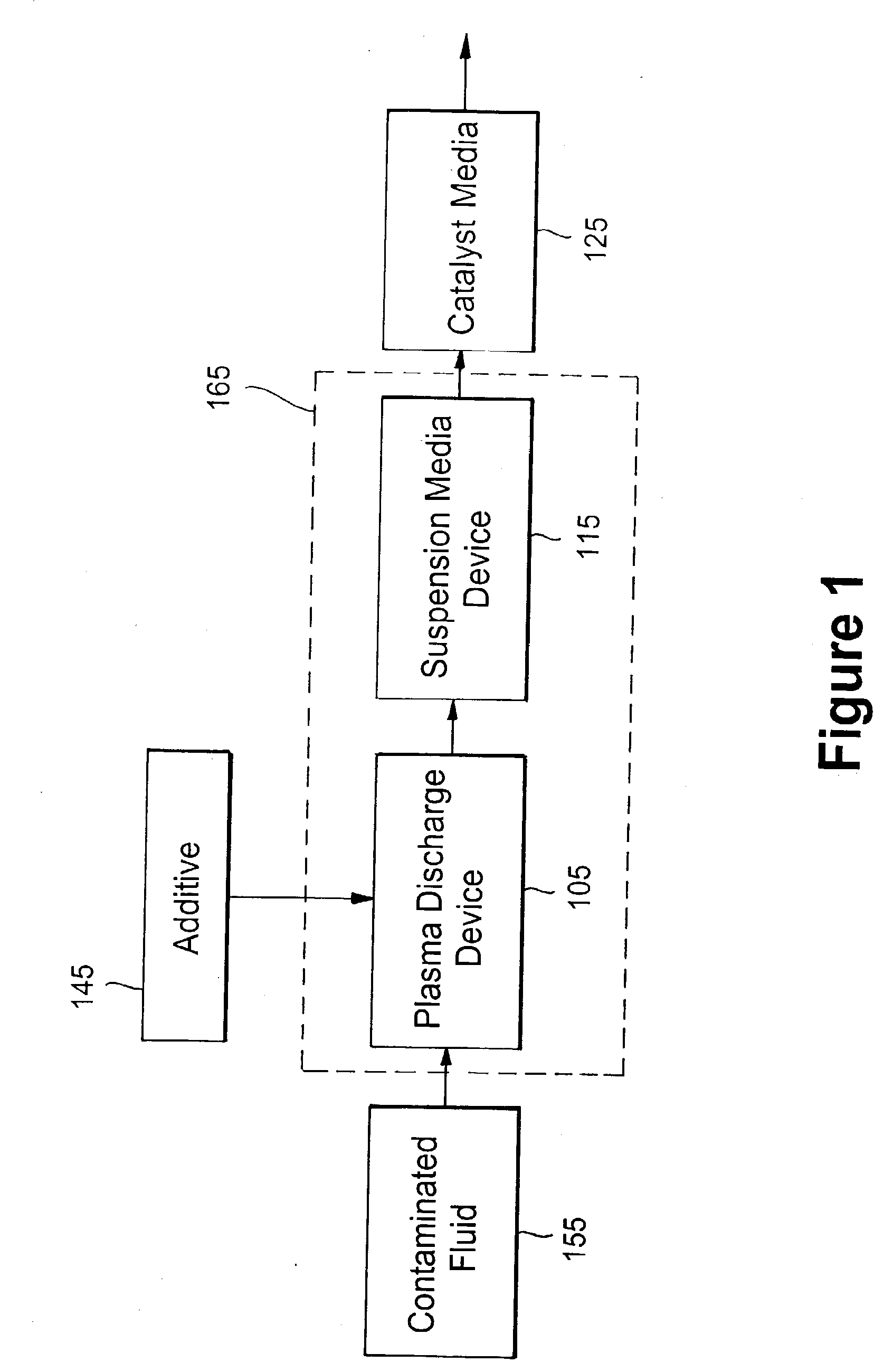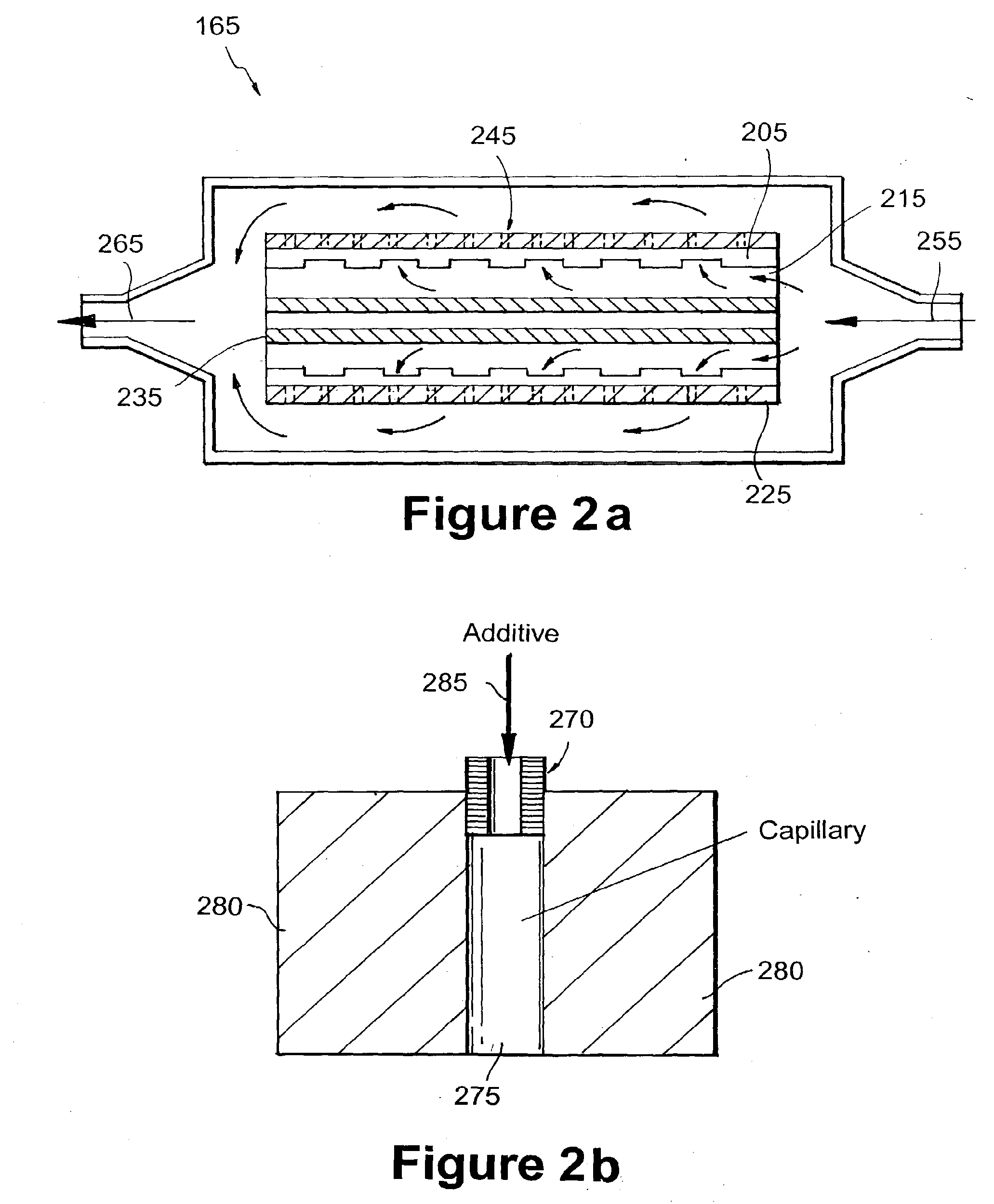In situ sterilization and decontamination system using a non-thermal plasma discharge
a non-thermal plasma discharge and in situ sterilization technology, applied in the direction of heating types, lighting and heating apparatus, separation processes, etc., can solve the problems of reducing the efficiency of the sterilization process, releasing into the atmosphere captured spores, pathogens, etc., and reducing health and environmental hazards. , the effect of improving the sterilization efficiency
- Summary
- Abstract
- Description
- Claims
- Application Information
AI Technical Summary
Benefits of technology
Problems solved by technology
Method used
Image
Examples
Embodiment Construction
[0022] The method described utilizes organic vapors (by way of example, alcohols) in a non-thermal plasma discharge to accelerate and improve overall sterilization rates on surfaces and in air streams. This can be applied to a variety of thermal and non-thermal plasma reactor devices. These reactors can operate using DC, AC or RF power supplies, and with a continuous or periodic supply of power.
[0023] The segmented electrode capillary discharge, non-thermal plasma reactor in accordance with the present invention is designed so that a solid or a fluid (e.g., a liquid, vapor, gas or any combination thereof) to be treated containing undesirable chemical agents, for example, an atomic element or a compound, is exposed to a relatively high density plasma in which various processes, such as oxidation, reduction, ion induced composition, and / or electron induced composition, efficiently allow for chemical reactions to take place. The ability to vary the energy density allows for tailored c...
PUM
| Property | Measurement | Unit |
|---|---|---|
| particle size | aaaaa | aaaaa |
| diameter | aaaaa | aaaaa |
| frequency | aaaaa | aaaaa |
Abstract
Description
Claims
Application Information
 Login to View More
Login to View More - R&D
- Intellectual Property
- Life Sciences
- Materials
- Tech Scout
- Unparalleled Data Quality
- Higher Quality Content
- 60% Fewer Hallucinations
Browse by: Latest US Patents, China's latest patents, Technical Efficacy Thesaurus, Application Domain, Technology Topic, Popular Technical Reports.
© 2025 PatSnap. All rights reserved.Legal|Privacy policy|Modern Slavery Act Transparency Statement|Sitemap|About US| Contact US: help@patsnap.com



